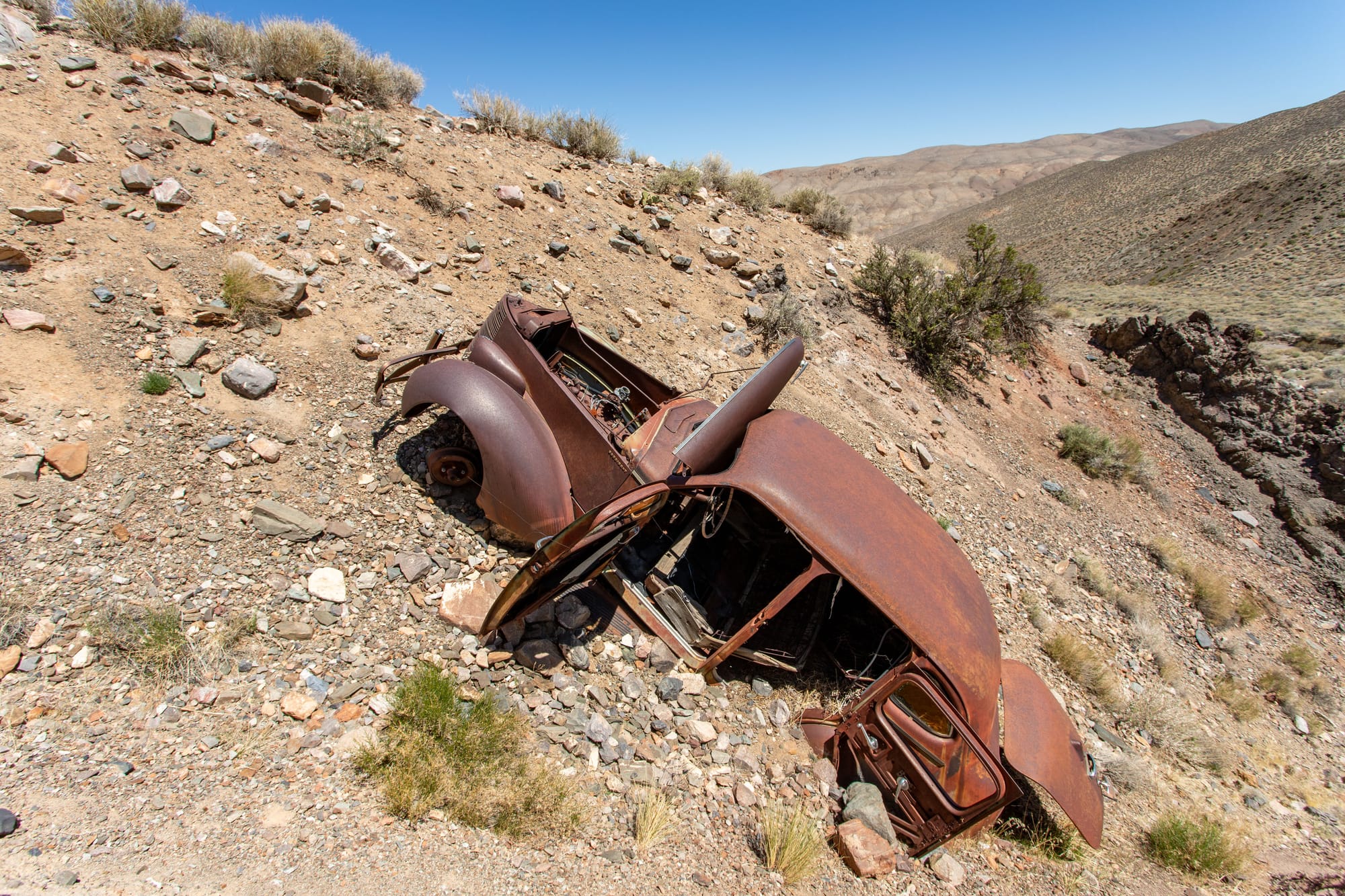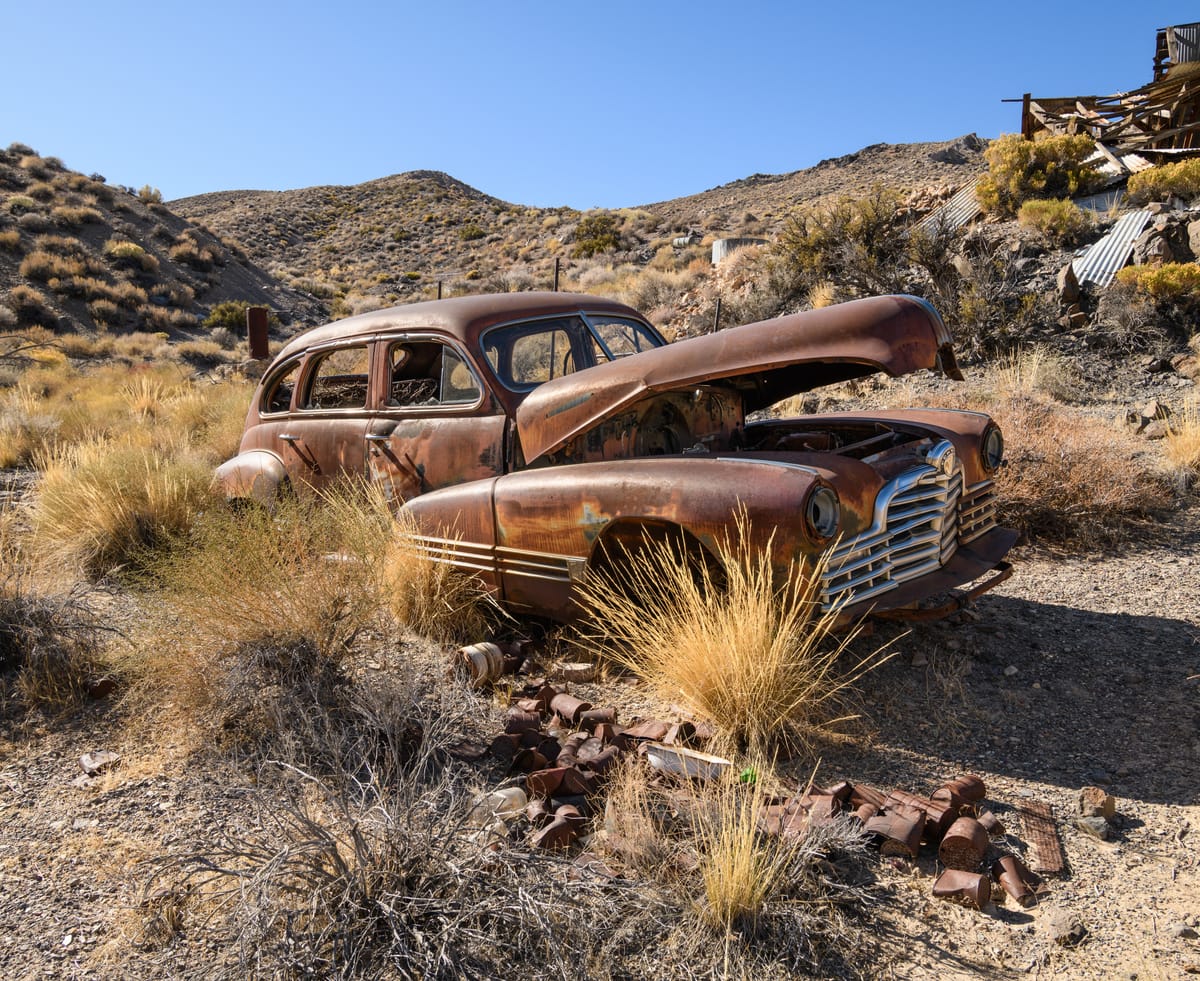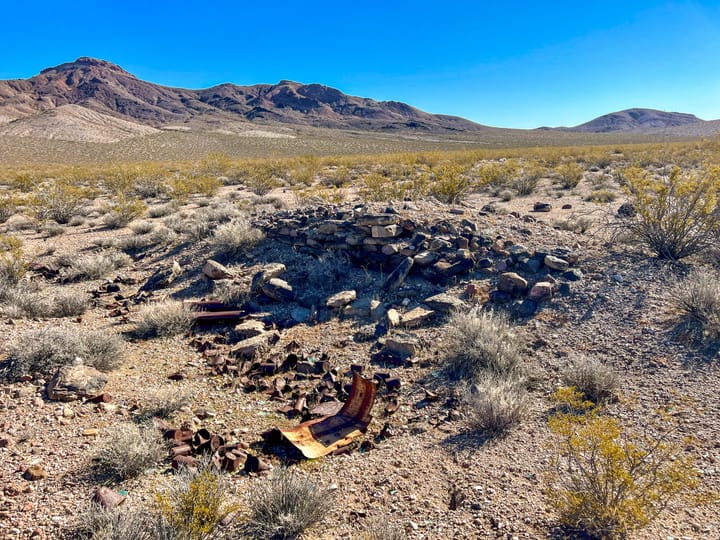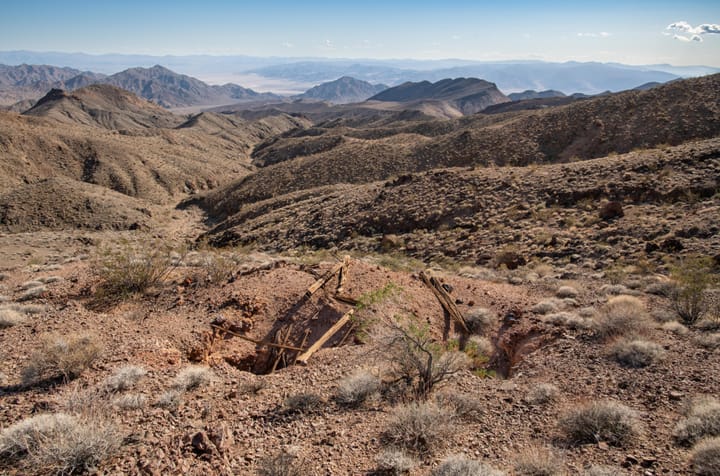Tucked away in a small canyon just off of Emigrant Canyon/Wildrose Road, on the slopes of the northern Panamint Mountains at 5,020 feet elevation, sits the Greene-Denner-Drake Mill. Forever in the shadow of its more famous neighbor, Skidoo, this quiet spot sees few visitors. This little camp contains a cabin, remains of a mill, a few old cars, and a wood-fired water heater scattered in the sagebrush.




